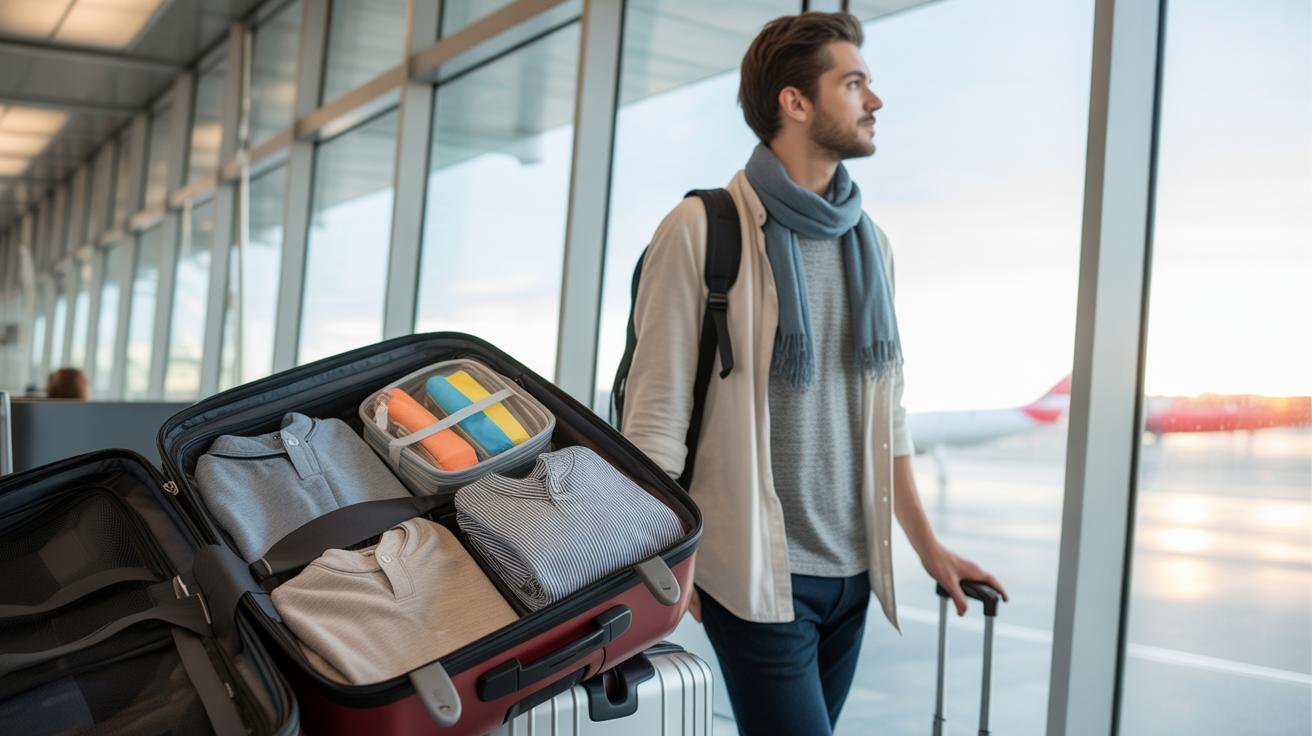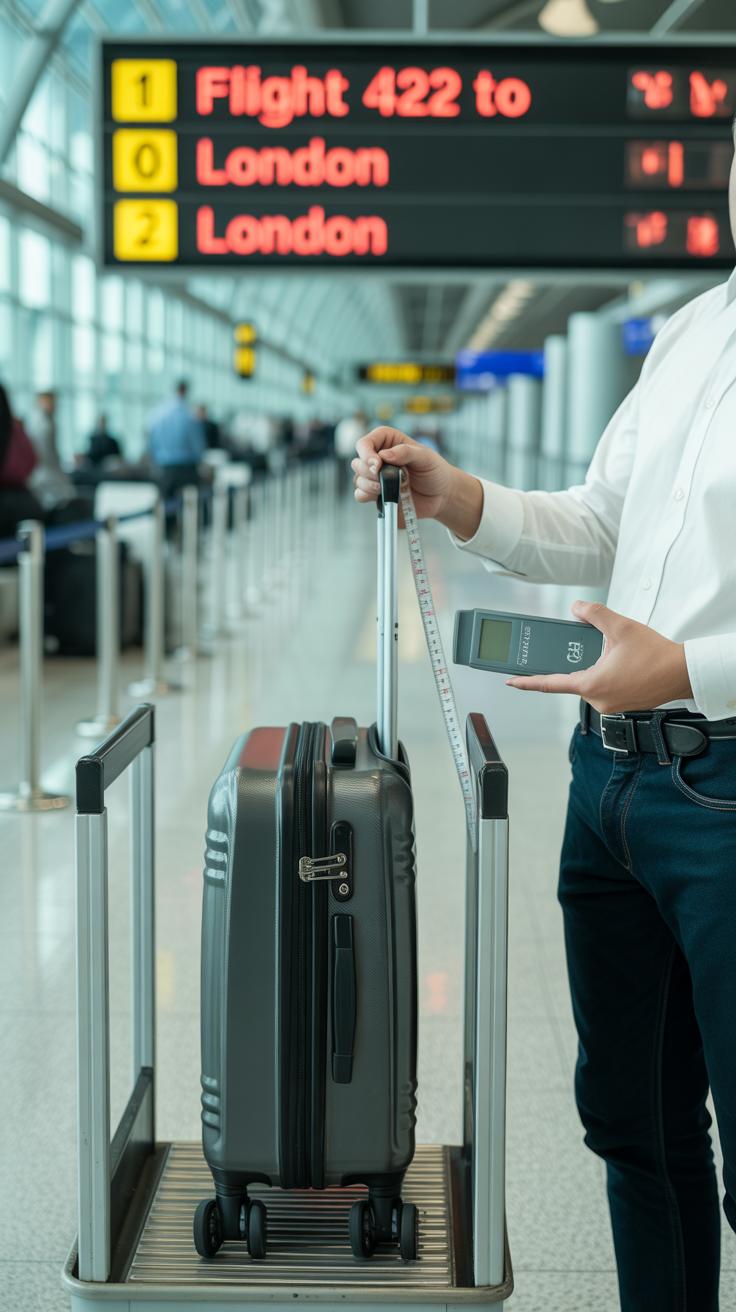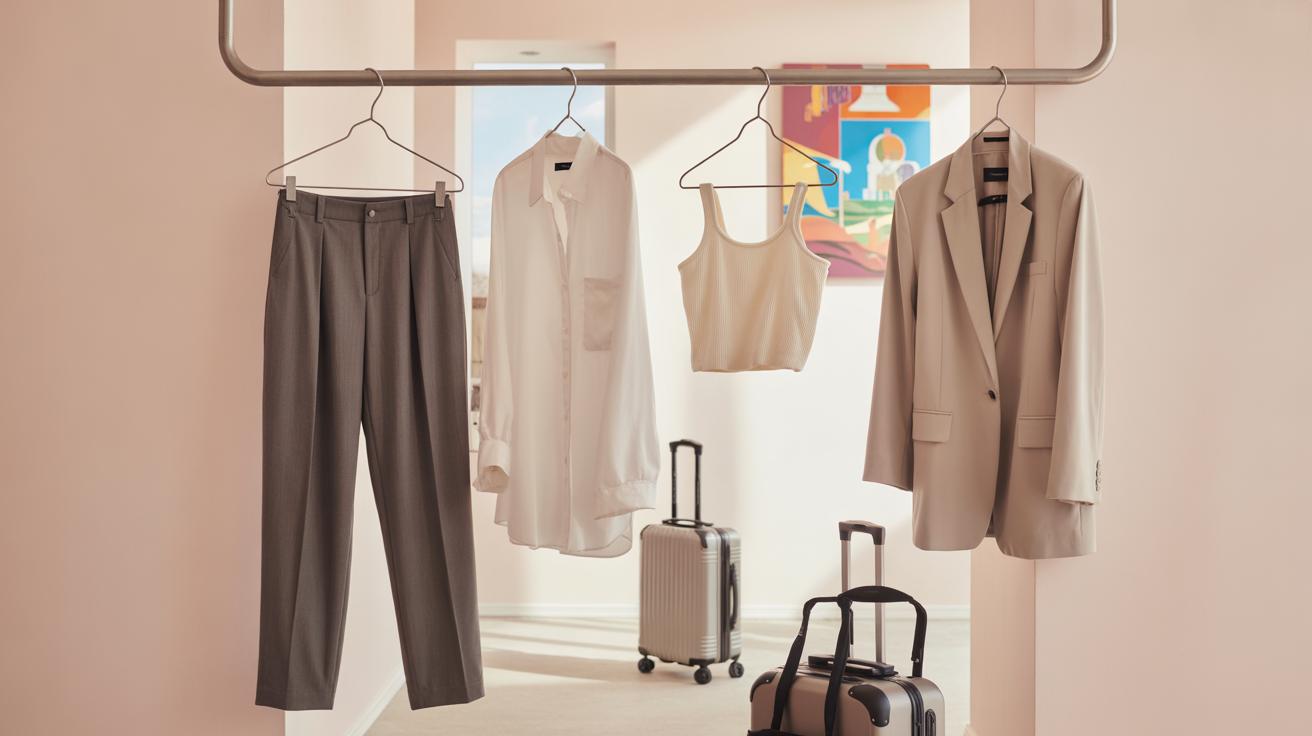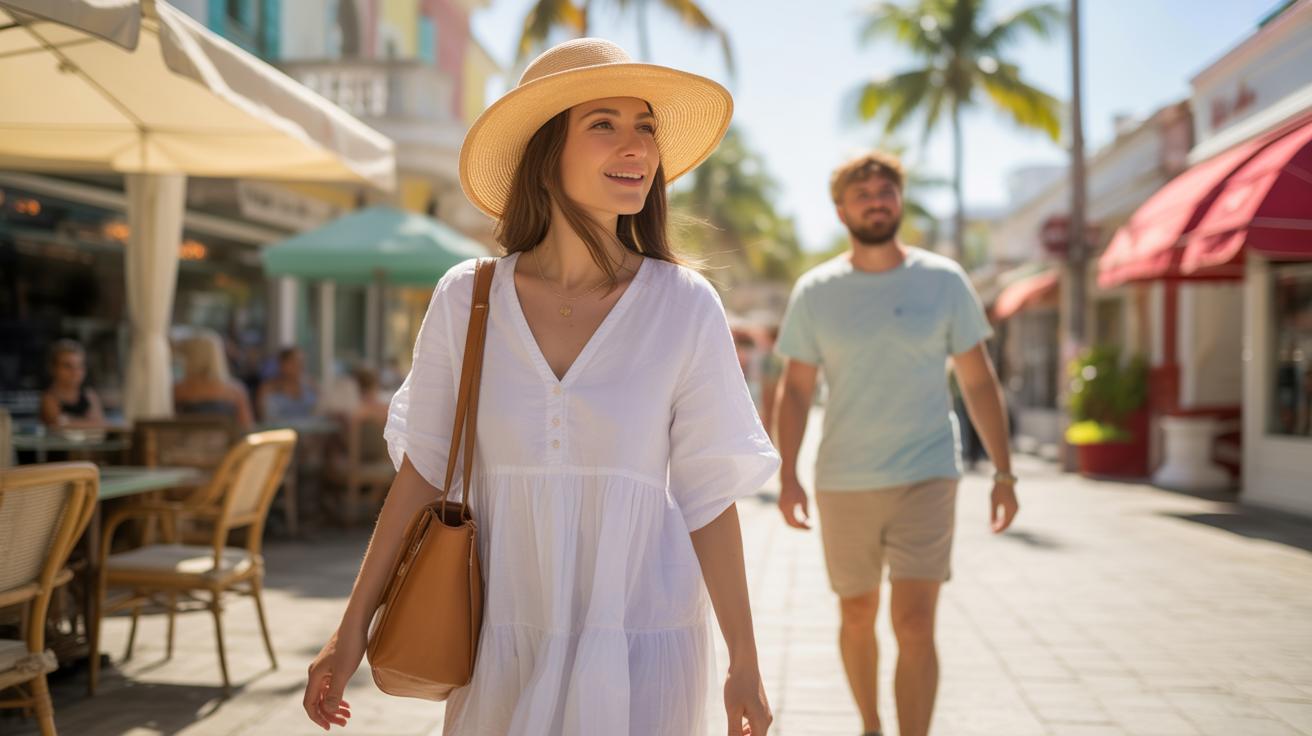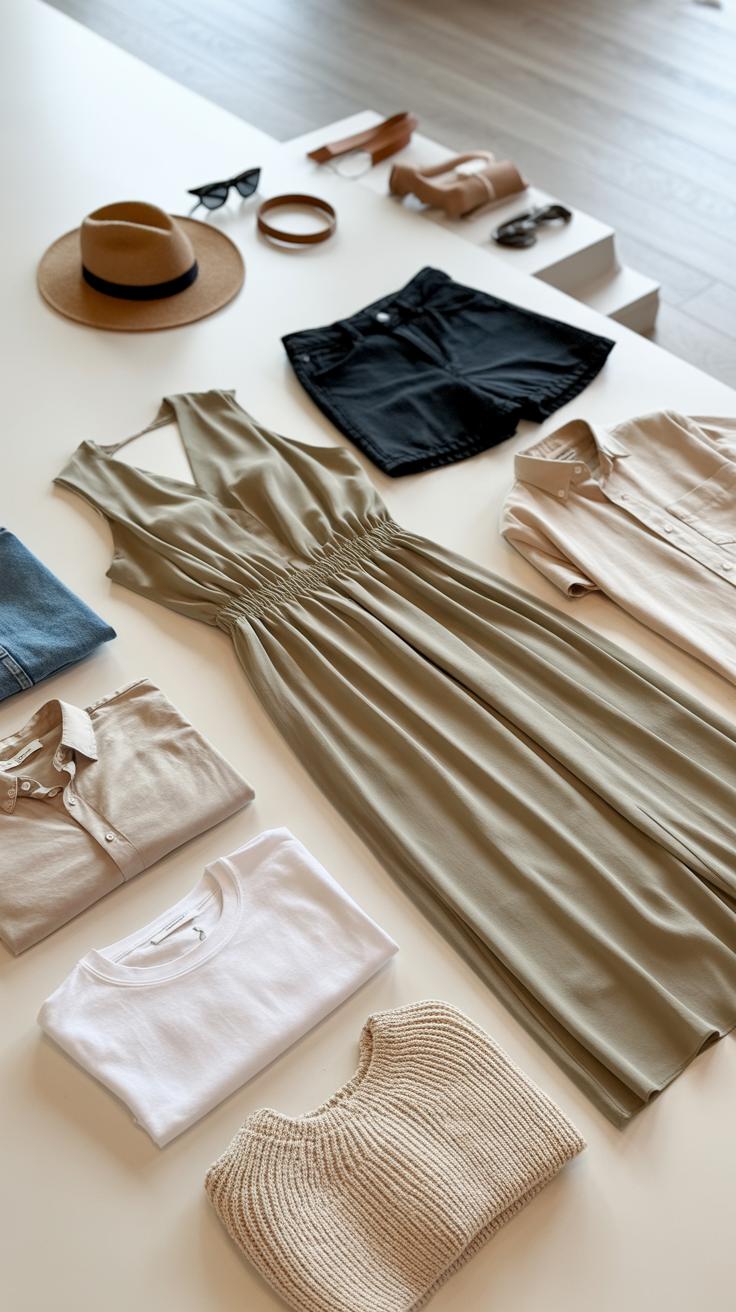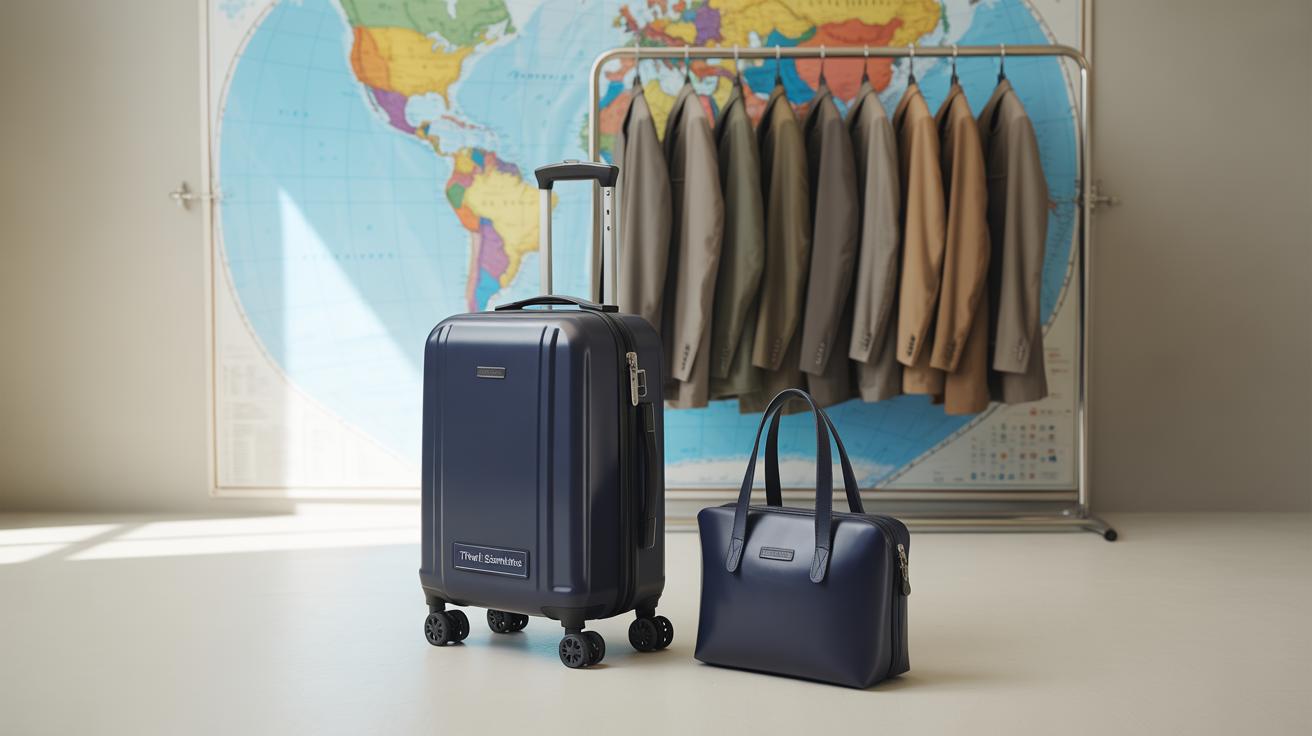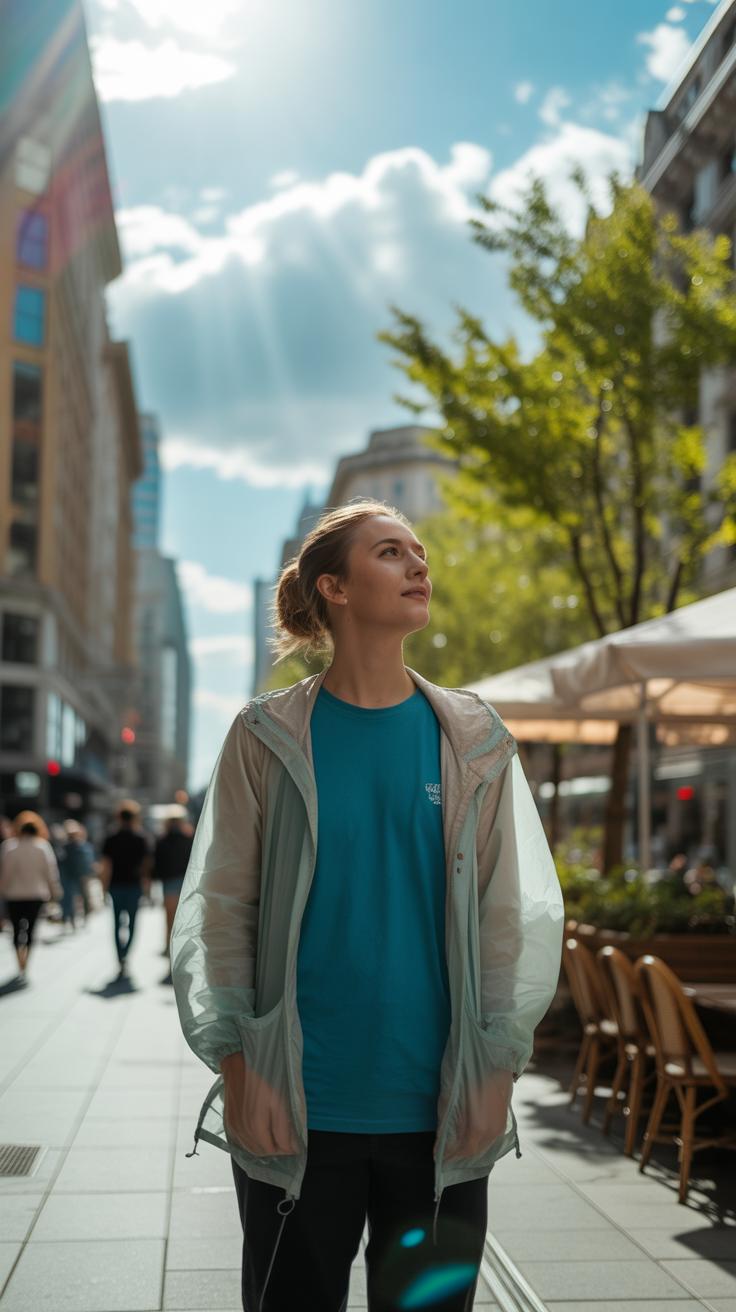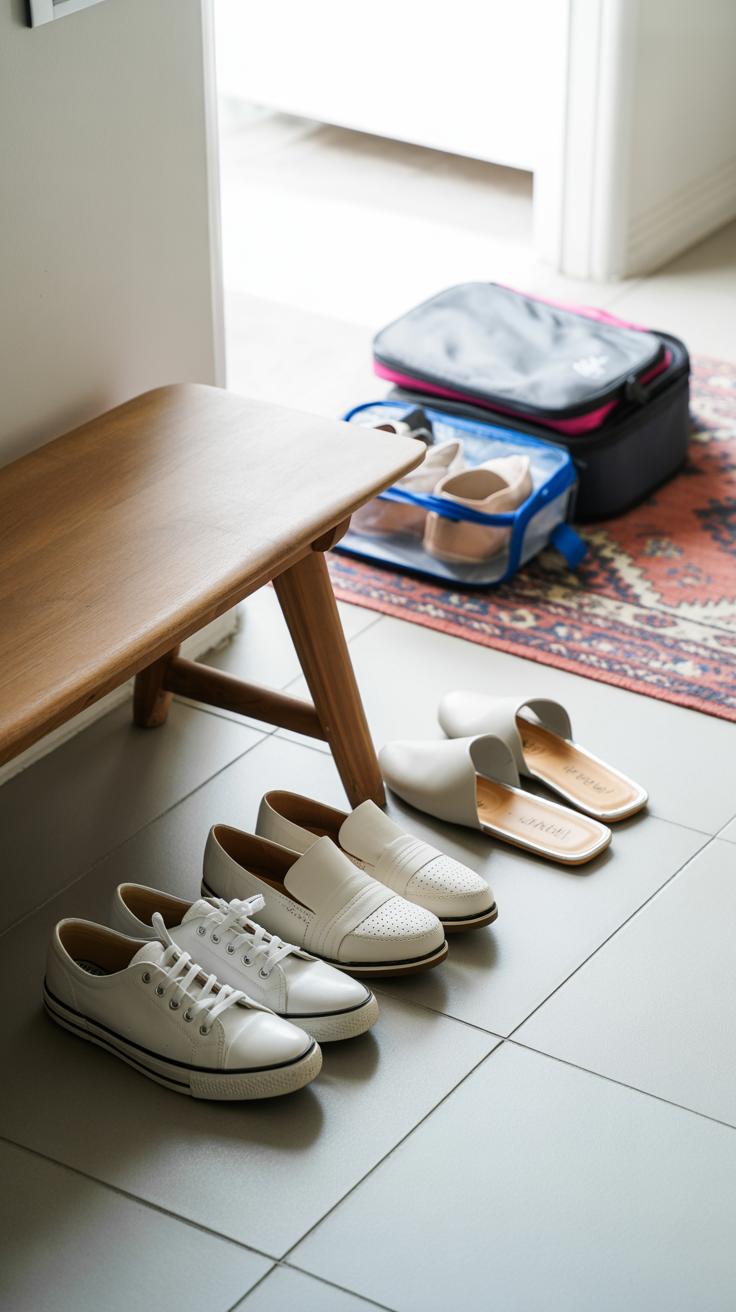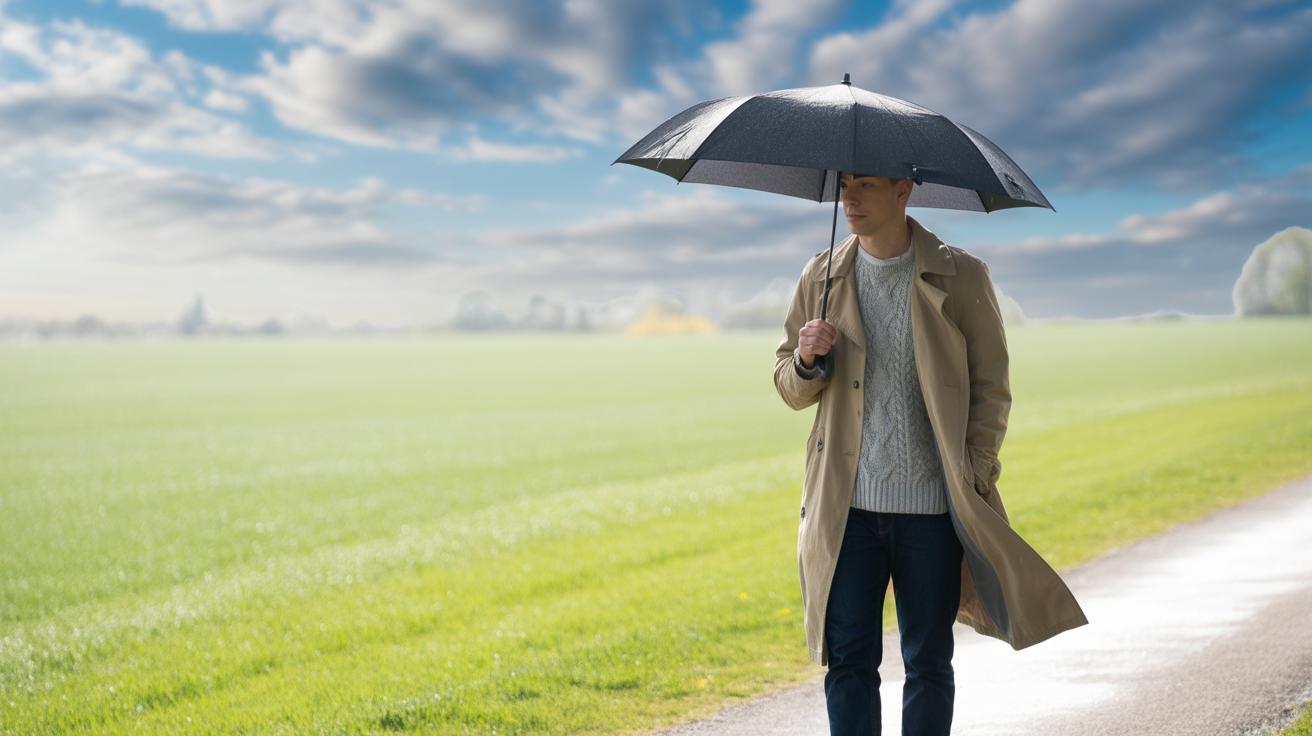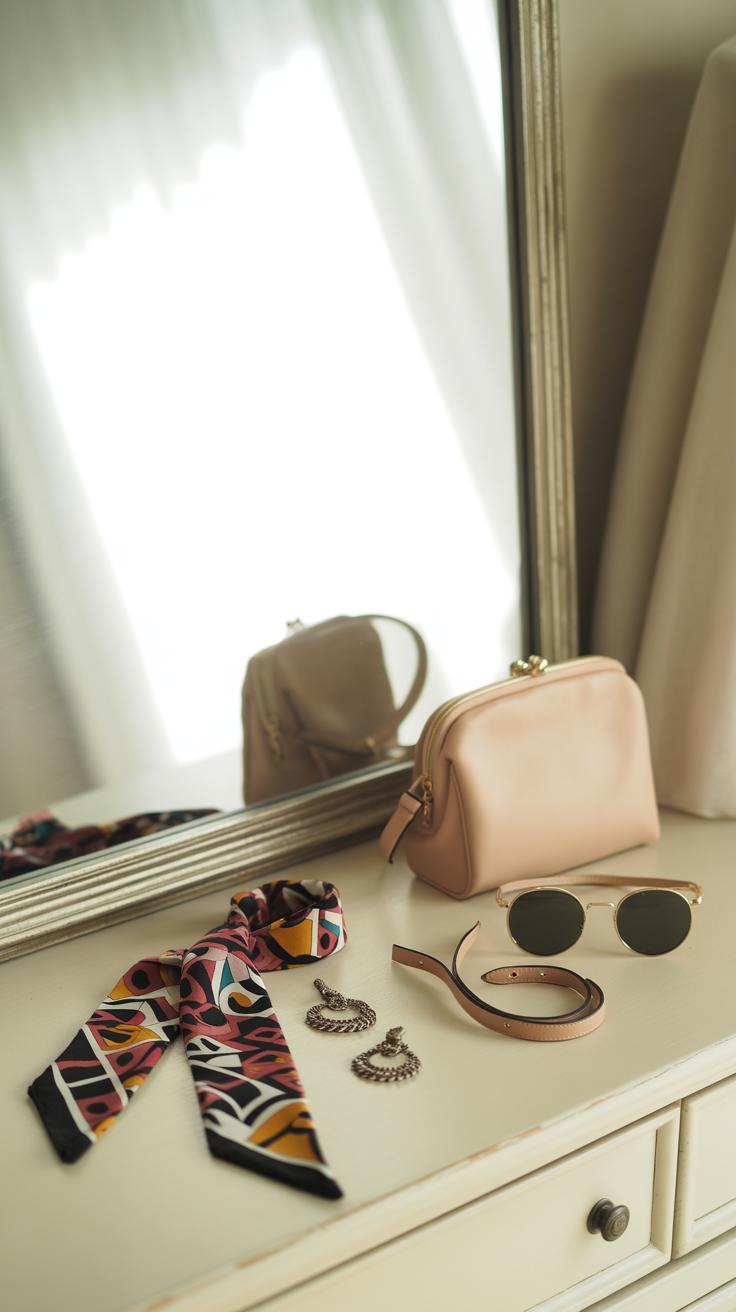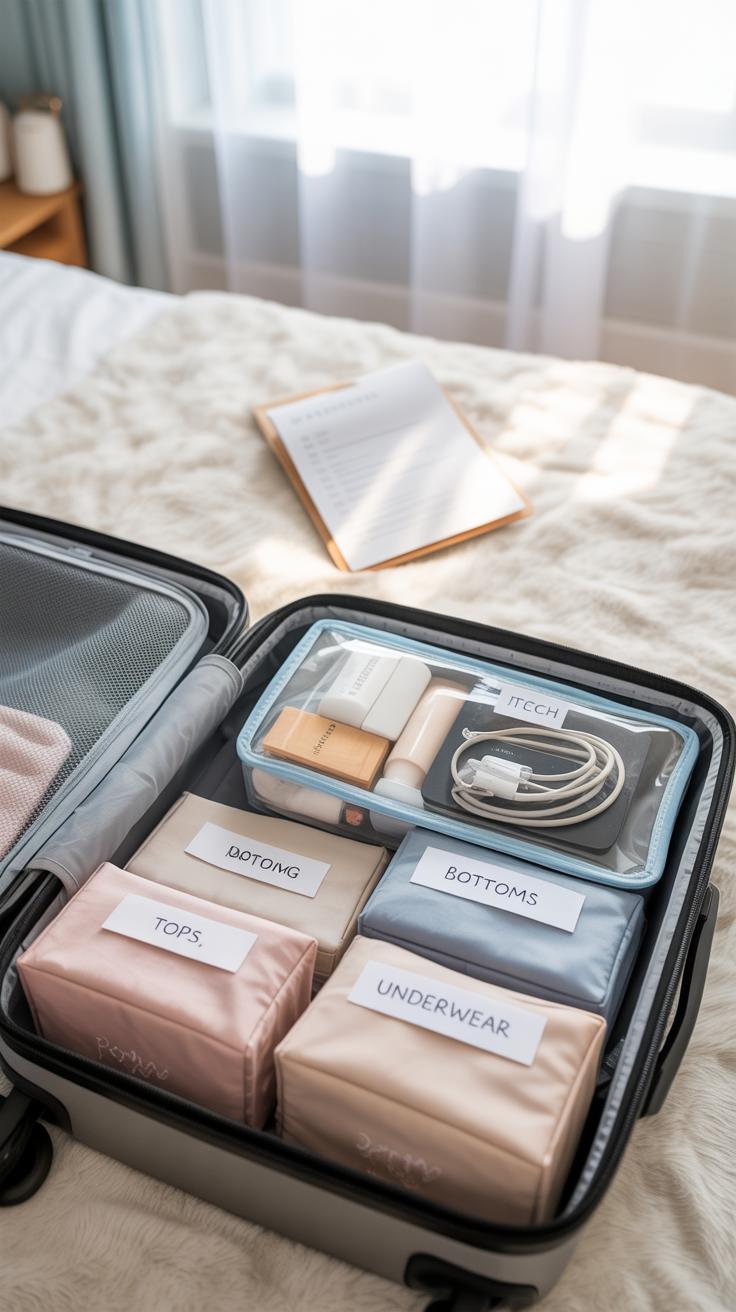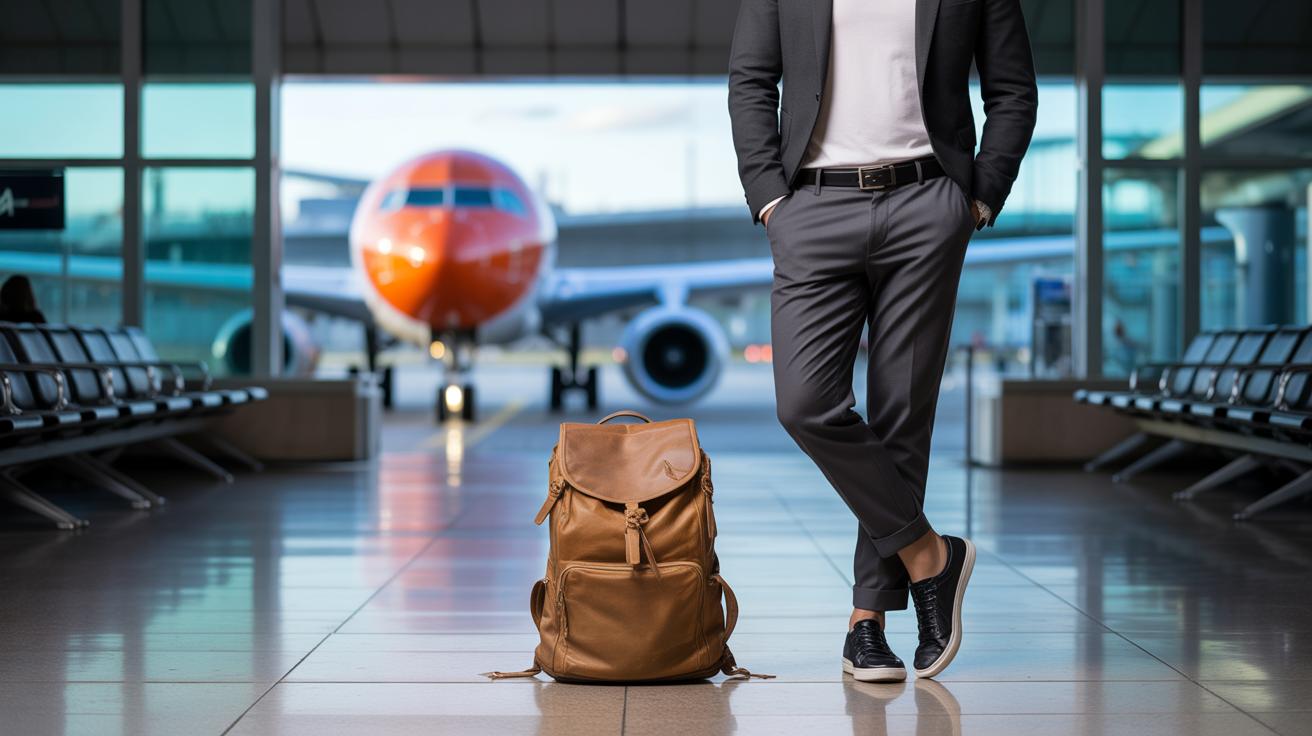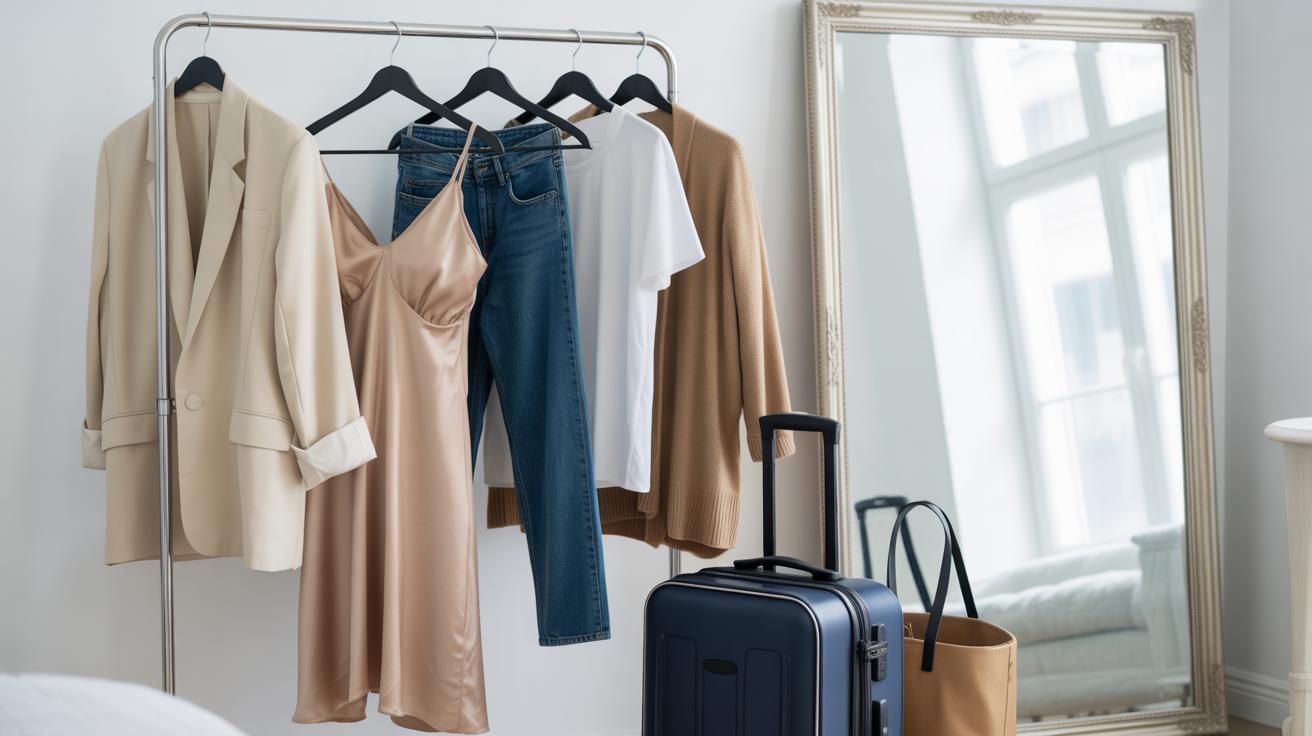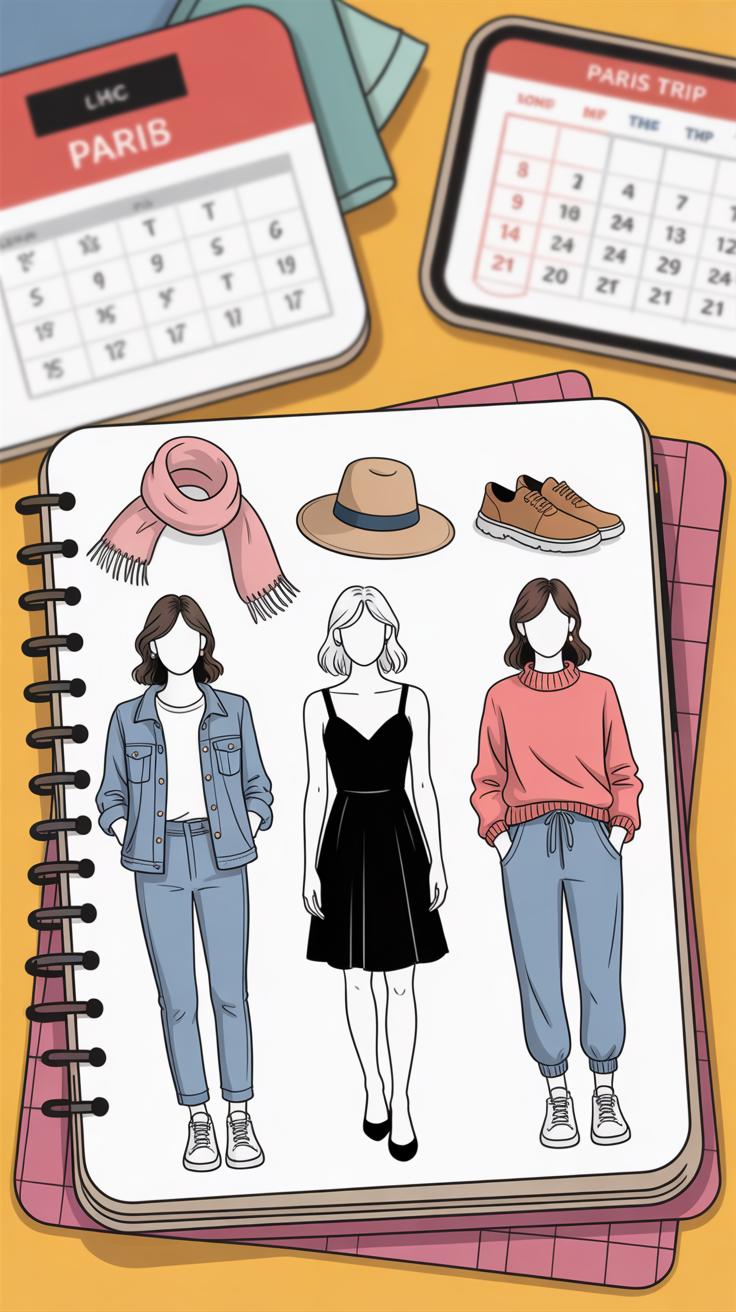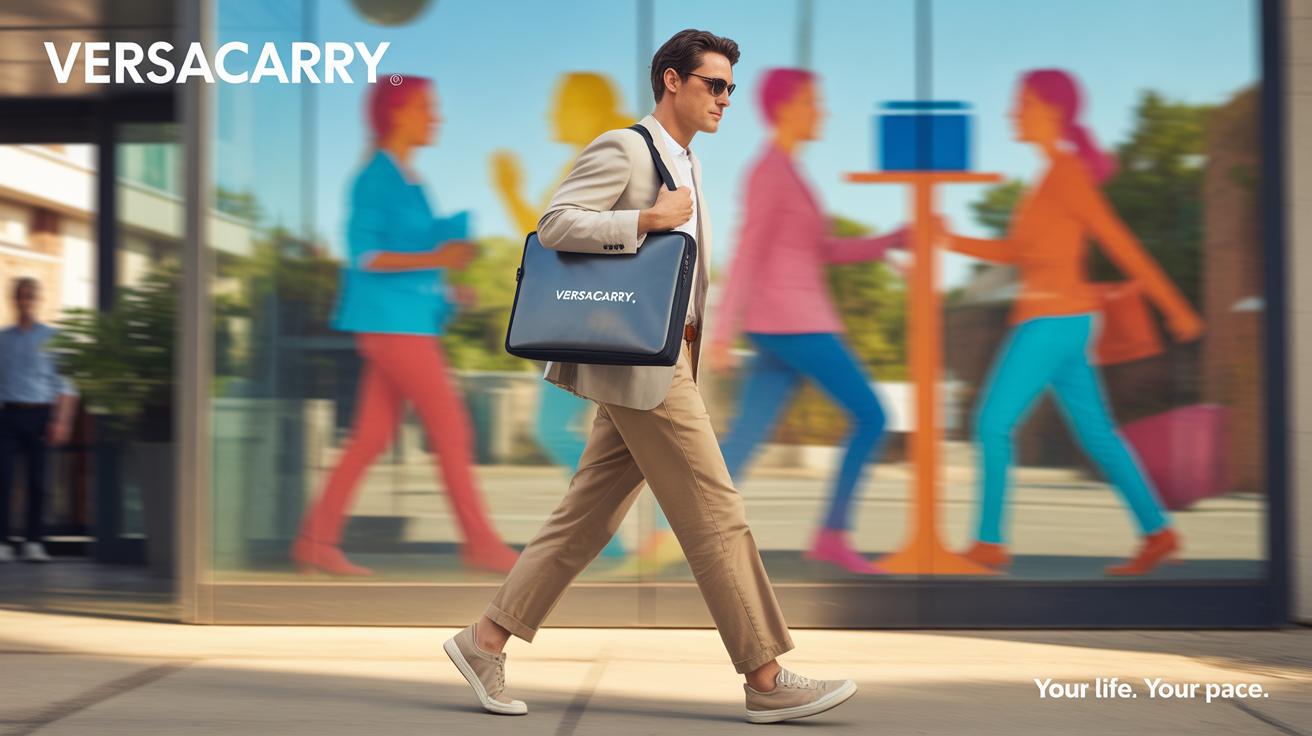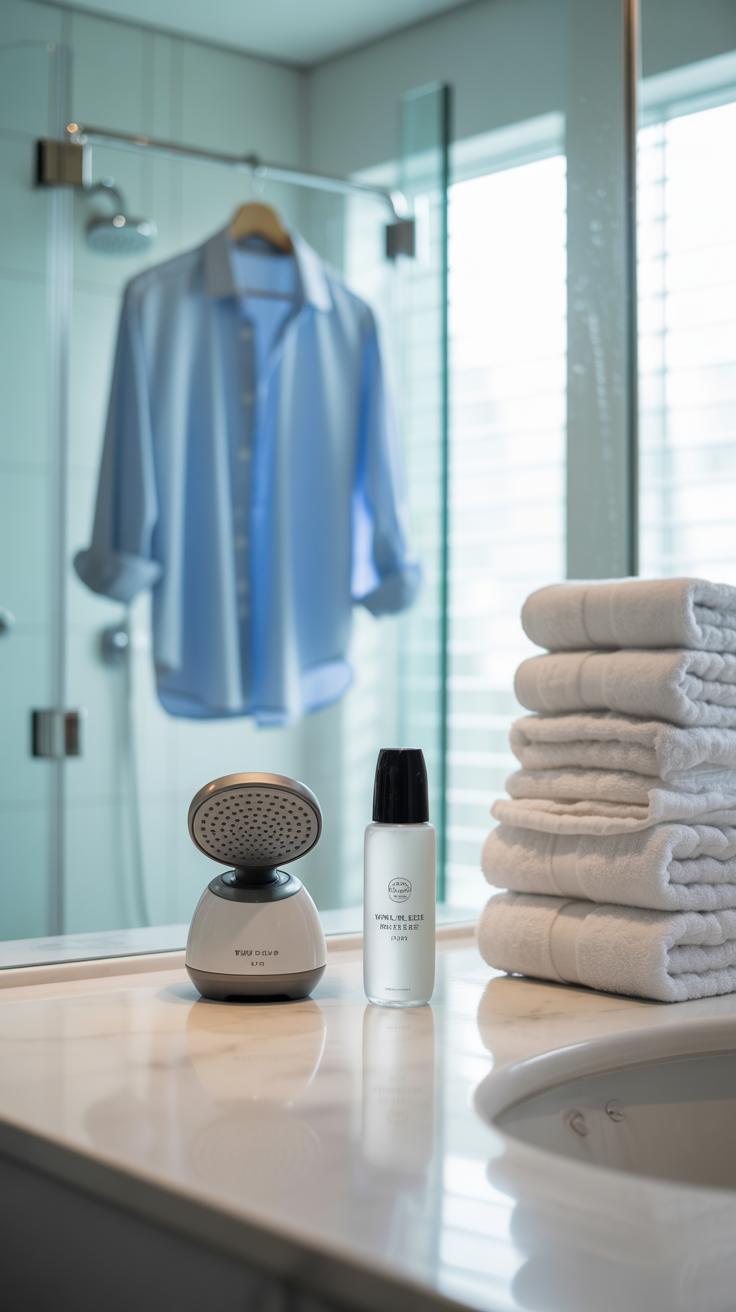Introduction
Traveling with only a carry-on bag can be freeing. You can move faster, skip long waits, and avoid lost luggage. But packing right is key. You want outfits that work well together and fit in your carry-on space. That means picking clothes that mix and match and serve many purposes.
This article explores simple travel outfit formulas perfect for carry-on packing. We discuss how to choose clothes, what to bring, and how to get the most from less. By the end, you will have easy ways to plan and pack your travel outfits so you feel ready, comfy, and stylish on your trip.
Understanding CarryOn Limits
When you think about packing only a carry-on, the size and weight limits aren’t just airline quirks—they shape almost everything you bring, especially your travel outfits. Most airlines stick to a carry-on size around 22 x 14 x 9 inches. That includes handles and wheels, so it’s not just about fitting clothes, but how you arrange them. I’ve had bags technically “allowed” but felt stuffed to the brim, and getting past gate agents was tricky.
Weight limits tend to hover near 15 to 22 pounds, though this varies a lot. Some airlines aren’t strict, while others can be picky, especially on smaller planes. Weight affects fabric choices more than you might realize. Bulky sweaters or heavy denim take up space and pounds that could be used differently.
These limits push you toward lighter, compressible layers and fewer shoes. They force a sort of minimalism that can be frustrating but also a bit freeing—what you pick to wear and pack needs to do more than one job. It makes you question what’s really necessary versus nice-to-have.
Size Guidelines for Carry-On Bags
Most carry-on size rules aim to keep bags fitting in overhead bins or under seats without hassle. The common maximum is roughly 22 x 14 x 9 inches, though some airlines tweak a bit. Staying within these dimensions means your bag can reliably fit wherever you go without the stress of last-minute gate check or repacking.
Why does this size matter so much? Because airlines have limited overhead bin space, especially on short flights or smaller planes. Oversized bags can delay the boarding process or cause disputes. Traveling light here helps you keep control. From my experience, packing a bit smaller than max size smooths your trip more than pushing limits.
Think beyond just the outside dimensions, too—packing clothes that compress well, like synthetic fabrics or merino wool, lets you fit more. Bulkier materials often fight for space even if your bag technically meets guideline measurements.
Weight Restrictions and Practical Impact
The carry-on weight limit can be surprisingly low. Many airlines set it between 15 and 22 pounds, sometimes less for budget or regional carriers. You might be tempted to fill that space with everything, but weight matters because you carry it throughout your journey.
Weight limits affect outfit choices more than you realize. Heavy sweaters, boots, or denim pile on the pounds quickly. Instead, you’ll want fabrics that are lightweight but still durable and comfortable. Thin layers that you can mix and match become key.
For example, I once tried packing several pairs of shoes and ended up wearing my heaviest pair just to avoid extra weight. It’s not ideal, but sometimes practical must override style or comfort.
Keep in mind, the more your carry-on weighs, the harder it is to manage during connections or long walks through airports. So, your fabric choices and the number of outfit pieces directly link back to these limits—lighter means more freedom to move.
Picking Versatile Clothing
Choosing clothes that can do double or even triple duty makes packing lighter feel less like a sacrifice. But what does that really mean? Think of pieces that aren’t stuck in one wardrobe box. For example, a simple black dress can be your go-to for dinners, but throw on a denim jacket, and it’s casual enough for sightseeing.
Focus on durable, neutral items that don’t scream “just one occasion.” Sometimes, a shirt that works for a stroll can slide into an evening mix if it fits well and looks sharp enough. Try to avoid overly trendy or highly specialized clothes; they usually don’t play well with others.
Pairing is key here. If you pick pants that go with at least three tops, it opens up options without bulk. And choosing fabrics that resist wrinkles means you won’t look scruffy after hours in a carry-on constrained world.
Mix and Match Basics
Base your suitcase on simple colors—think navy, black, gray, white, beige. These aren’t flashy but they’re flexible. A white tee pairs with endless bottoms, just as a neutral cardigan layers over nearly anything.
Keep styles classic, too. Slim pants, basic tees, button-down shirts, or plain skirts usually harmonize, making layering or swapping pieces straightforward. You don’t have to memorize fashion rules to create many combinations; it’s about picking items that naturally fit together.
Try imagining every piece worn at least twice with something else before you pack. Does your blue shirt look just as good with your black skirt as with your beige pants? This approach cuts down what you bring—less to lug, less to worry about.
Clothing for Different Functions
When space is limited, versatility stretches beyond colors and cuts. Each item should serve more than one purpose. Can a loose top be worn during a light workout or a casual brunch? Can your pants be comfortable enough for walking yet tidy enough for an evening out?
Consider layering-friendly items that work for changing activity levels. A pair of leggings might be great for a quick jog but also comfy underneath a dress or skirt later. And lightweight shoes that handle both light exercise and city walks can save precious space.
Sometimes, you might prioritize something that’s not perfect at either end but good enough in both. Balancing comfort, style, and function won’t always be neat or perfect, but it’s a practical way to travel smarter with only a carry-on.
Layering for Changing Weather
Layering is a traveler’s best friend when you want to stay comfortable without lugging around too much. It’s not just about piling on clothes, but about combining pieces thoughtfully. With a few lightweight layers, you can adjust to sudden drops in temperature or unexpected sun breaks without feeling bulky or overwhelmed.
Choosing Lightweight Layers
Look for thin fabrics that provide warmth without adding weight. Merino wool or technical blends are great—they keep you cozy but don’t eat up space in your carry-on. A lightweight long-sleeve tee, a thin sweater, and a packable jacket usually fit the bill. I once underestimated the power of a simple silk base layer on a chilly morning—it kept me warm without sweating. Surprising how a thin piece can make a difference.
Combining Layers for Style and Comfort
When layering, think about contrast and function. Try pairing a classic button-up underneath a crewneck sweater, topped with a slimming jacket. This combo not only looks put-together but lets you peel off layers when it heats up quite quickly, especially indoors. Don’t shy away from mixing textures—sometimes a bit of variation adds interest without extra packing hassle. Plus, it feels good to have options. What if you want to look sharp for dinner but still be ready for a brisk walk? Layering solves that puzzle—though maybe not perfectly every time.
Footwear That Does It All
Picking shoes for travel isn’t just about comfort—it’s a real balancing act. You want something that feels good for walking all day, but also looks decent enough for a quick dinner or casual meeting. Ideally, one pair should cover it all, saving space in your carry-on and cutting down the hassle of lugging extra footwear.
Choosing Multipurpose Shoes
Think of shoes that blend style with practicality. Lightweight sneakers that don’t scream “athletic” can work well, or maybe low-profile loafers with cushioned soles. Look for shoes with breathable fabrics, good arch support, and a sole that grips well on different surfaces. You might hesitate between something trendy and something practical—it’s a tricky call, but comfort usually wins, especially when you’re on your feet a lot. I’ve been caught out before by shoes that looked great but wore me down in hours.
Packing Shoes Efficiently
Shoes can be bulky, but how you pack them makes a difference. Always stuff socks, small items, or chargers inside the shoes to make use of space. Place them at the bottom of your bag, heels inward, to keep the shape and protect other gear from dirt or scuffs. Wrapping shoes in a thin cloth or placing them in a separate bag can keep your clothes safe. I sometimes worry about my shoes crushing softer items—sometimes it feels like there’s no perfect way, but these little tricks help minimize that risk.
Accessories That Change Your Look
Small accessories can do so much to your travel outfits without taking up room in your carry-on. A simple addition or swap can freshen a look or shift it from casual to a bit more polished. You don’t have to stash bulky items to feel like you’ve packed variety.
Using Scarves and Jewelry
Scarves are surprisingly versatile. A lightweight scarf can add a splash of color or pattern, drape around your neck, or even serve as a shawl on chilly planes. They pack flat, so you might carry two or three without noticing the weight. Jewelry, especially thin chains, small earrings, or minimalist bracelets, updates an outfit in a snap. These pieces don’t bulk up your bag, yet change the vibe of simple basics. Sometimes I’ve grabbed a plain tee and slipped on a long necklace or stacked a few delicate rings, and suddenly I felt more put-together. It’s easy, quick, and you don’t need much space. What’s more, scarves can double as headbands or even belts in a pinch—making them an oddly useful travel companion.
Hats and Bags for Function and Style
Choosing your hat and bag carefully matters. A hat isn’t just about looks—it can shield you from sun or hide a bad hair day after a long flight. Think of a foldable sunhat or a compact cap that fits easily inside your carry-on. As for bags, a crossbody or sleek backpack holds essentials while complementing your outfit. Select one that’s roomy enough for your travel needs but small enough to avoid bulk. Some bags come with multiple pockets, helping you stay organized without extra luggage. They also pull your look together—so even if your clothes are simple, your accessories can say a lot. Have you noticed how a good bag can make you feel more confident on the go? I find it’s those practical touches that really balance style and function.
Organizing Your CarryOn Efficiently
Packing travel outfits in a carry-on means you have to be careful with space—but also with keeping clothes neat and within reach. You don’t want to dig endlessly or end up with a wrinkled mess when you arrive. There’s a balance to strike here, and it isn’t always intuitive.
Folding and Rolling Clothes
Rolling clothes can save a surprising amount of space and often reduces wrinkles, but it’s not perfect for everything. For example, soft T-shirts and casual pants do great rolled up tightly. Try this: lay the item flat, fold in sleeves or sides to make a straight shape, then roll firmly from the bottom. You’ll find it takes less space and unfolds smoother than you think.
On the other hand, items like dress shirts or blouses might need a careful fold to avoid creases. Here, a simple flat fold along seams works better than rolling. Personally, I mix both methods depending on the fabric and formality of the garment—because sometimes rolling even works for knits that wrinkle easily. It can be a bit trial and error.
Using Packing Cubes and Organizers
Packing cubes are a game-changer, really. They compartmentalize your carry-on and keep outfits tidy. You can separate clothes by type—tops in one cube, bottoms in another—or by outfit. This way, you don’t have to empty your entire bag looking for a single piece. It also creates a neat layer effect.
When you pack cubes loosely, you lose the compression benefit. Press down gently to reduce air pockets without squishing fabrics too much. I also like using a small cube for underwear and socks, making them easy to grab without unfolding everything else.
Think about accessibility—put your morning outfit in the top cube, or the one nearest to the opening. That way, getting dressed becomes less of a scavenger hunt. Your carry-on stays orderly, and your day starts better.
Planning Outfits in Advance
Planning your outfits before you pack can really change the whole travel experience. It stops you from tossing half your wardrobe into your carry-on just because you’re unsure what you’ll wear. When you’ve planned, you avoid that last-minute panic of “What am I even going to put on tomorrow?” which can be surprisingly stressful, especially when you’re tight on time or space.
Think about your trip’s length and the activities you’ll do. Are there dinners, hikes, or city tours? Knowing that upfront helps you pick clothes that serve more than one purpose. Maybe one pair of pants works for both walking around and dining out. That’s the kind of thinking that keeps your bag light and your days smooth.
Try jotting down what you want to wear each day—yes, an actual list—and check off options as you test them. Speaking of tests, throwing your outfits on at home before packing sounds tedious but stops awkward surprises like realizing your new shirt wrinkles easily or your shoes hurt after only an hour. It’s better to figure that out early.
Does it all match your style? Does it feel comfortable? Don’t just assume it’ll be fine once packed. Testing outfits ensures no regrets once you’re away, juggling luggage and schedules. A little prep at home means less thinking later, leaving more energy to enjoy your trip—even if things change a bit, you’ll have a solid foundation to fall back on.
Caring for Clothes On The Go
Keeping your travel outfits clean and fresh during a trip—when you’re limited to just a carry-on—feels like a bit of a puzzle. But it’s not impossible, even if you don’t have access to a laundromat. I’ve found that a few simple habits can make a difference without adding stress or taking too much time.
Quick Washing Tips for Travelers
If you’re in a hotel or rental, washing small items like underwear, socks, or even a shirt doesn’t have to be a big deal. A quick soak in the sink with some soap, followed by a gentle rinse, usually does the trick. Rolling clothes in a towel to press out extra water helps speed up drying. Sometimes I toss clothes near a fan or under a weak heater—whatever’s available—and it’s surprising how fast they can dry.
In a pinch, some travelers swear by travel-sized detergent sheets or soap bars that fit in your bag. They take up almost no space and mean you can freshen something up anywhere. It’s worth experimenting just to avoid that “did-I-really-wear-this-again?” feeling.
Storing Clothes to Avoid Wrinkles and Smells
How you pack and store clothes in your carry-on makes a bigger difference than I expected. Rolling rather than folding can cut down wrinkles a lot, but be cautious with delicate fabrics that might crease anyway.
At your lodging, if you can’t hang your clothes, try laying outfits flat or on top of each other, rather than piling everything in one heap. It reduces wrinkles and helps air circulate, so nothing feels too musty when you pull it out. I usually stash a small sachet of baking soda or a fresh dryer sheet in my bag to keep any odd smells away. It’s a small step but makes morning outfit decisions less… tentative.
One question I often ask myself: can I re-wear this tomorrow without feeling off? When you’re traveling light, that question is constant. Caring for your clothes on the go means giving them small bits of attention, enough to keep them wearable and comfortable without overthinking it.
Conclusions
Choosing the right travel outfits for carry-on packing is about smart selections. Focus on versatile clothes that mix and match. Bring layers to adjust to different weather. Pick items that work for day and night. This lets you pack less and still have style and comfort.
With thoughtful packing, your carry-on travel outfits help you move smoothly. You spend less time waiting and more time enjoying your trip. Try these outfit formulas for your next journey and travel light with ease.


